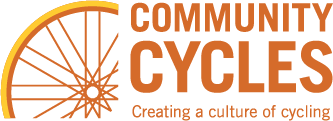Problems and Solutions
The automobile dominant model for transportation in Boulder, and America as a whole, has led to large numbers of fatalities and serious injuries,. It does not have to be this way.The Current Problems
Much of Boulder was built with the assumption that the automobile would always be the dominant mode of transport, a design choice with far-ranging and troublesome consequences as our population has grown, housing prices have increased, and the menace of climate change has come into focus.
But automobiles kill and seriously injure many people. Traffic congestion persists despite adding travel lanes, slip lanes, signals synchronized for throughput, and high quality concrete. Car dependency contributes to worse physical and mental health. Cars are necessary because we have inadequate alternatives, but cars are getting more expensive.
Environment: Automobiles and trucks are the primary source of the gases that are causing global warming. Cars facilitate the urban sprawl that is destroying so much wildlife habitat.
A Two-Part Problem
Most cars on Boulder’s streets are engaged one or the other of two types of trip: (1) commuting to/from Boulder for work, and (2) running local errands.
-
Commuters into Boulder – Those who commute across City boundaries (so-called transboundary commuters) make up more than 50% of the vehicle miles traveled on Boulder’s roads and, so far, have been the most intractable contribution to vehicle miles traveled in Boulder. Figure 10, City of Boulder Community-Wide Greenhouse Gas Emissions Summary Report.
-
Local Trips image – Mode share for trips within Boulder has improved but is still anemic compared to cities that are on track to meet their climate goals. Vehicle miles traveled (VMT) has not gone down in Boulder, despite nearly half of workers now working remotely. This suggests that a most in-town driving is for errands and driving children to school and activities.
A Two-Part Solution
A two-part problem calls for a two-part solution, one focusing on those who commute to/from Boulder and another, solution for those traveling within Boulder.
For commuting into Boulder, we need trains and buses, not wider highways. We need real Bus Rapid Transit on US36, the Diagonal/Hwy.119 to Longmont, and on Arapahoe Ave to Louisville, Lafayette, and Brighton.
For traveling within the city, we need more frequent, more reliable buses to more destinations and even dedicated bus lanes that allow buses to compete with cars. We need good facilities for bicycling including protected bike lanes on busier streets, safe street crossings, safe and abundant bike parking, and a safe network that extends to every corner of town. An eight-year-old child should be able to travel safely around town on a bike. For walking, we need consistent, safe, and pleasant sidewalks. We need to create “Walkable Neighborhoods” with more grocery stores, restaurants and bars, and other commercial activities within walking distance of our homes
Successes Elsewhere and in the U.S.
It is possible to transition away from car dependence. Many cities in Europe and Asia have accomplished this. Some cities in North America are getting close. Amsterdam and Copenhagen were once inundated by automobiles but years ago they made a decision to change that transportation pattern. They invested (for many ensuing years) in better bike routes and better transit and now can boast of much lower dependence on cars. Many cities in North America are now beginning to adopt that approach, and a few have achieved high percentages of non-automobile travel. Boulder has talked about this approach for many years, but it spent far more money on making automobile travel smoother and easier. It is time for change.
Applicability & Adaptation to Boulder
It is common for those who’ve observed first-hand just how much better transportation works in places like Amsterdam or Copenhagen to wonder if we can enjoy the same success by simply copying their approach. There is no reason to think that, with a few tweaks, their basic approach would not work in Boulder. Here are some tweaks that may be needed.
Resources
Report a Maintenance Problem, City of Boulder
City of Boulder: To report a street maintenance related problem (potholes on the bike path, paths blocked by snow), complete the form and provide your contact information.
Report County Road Service Issue
Boulder County: To report a street maintenance related problem (potholes on the bike path, paths blocked by snow), complete the form and provide your contact information.
Report an Aggressive Driver
If you find yourself in a situation with an aggressive driver, remember you can dial *CSP (*277), free of charge. Report “real time” aggressive driving behavior to the Colorado State Patrol.
Report a Close Call – Inquire Boulder
Have you had a close call with a bicycle, pedestrian or motorist? This data is important and used in analysis of the safety of our streets.
Bike Theft Prevention & Registration
Learn tips and tricks for preventing your bicycle from being stolen, like registering your bike on Bike Index and knowing which lock to use how to properly use it.
Join the Advocacy Committee
We aspire to help Boulder become a dynamic and sustainable city that maximizes the safety, comfort, and convenience of its residents and prioritizes long-term environmental stewardship.
